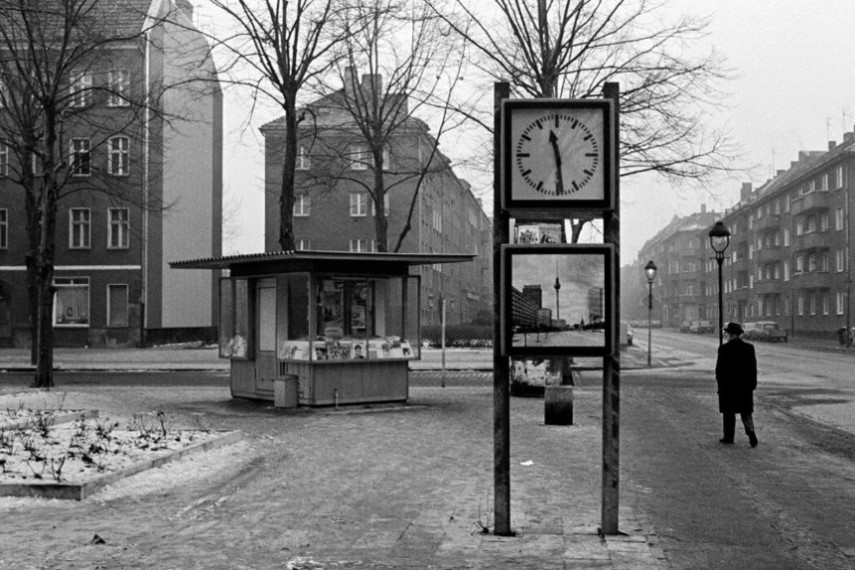


In 1949, four years after the end of World War II, the Allies divided Germany into West Germany (the Federal Republic of Germany, FRG) and East Germany (the German Democratic Republic, GDR). In 1961 the Wall was built, and exchange and communication between the two German states became even more difficult than it was before. Chess remained a common hobby, and chess composers in both German states left their marks nonetheless.
For chess composers, the main restriction was that they were unable to travel into western countries and the fact that they could not always send chess compositions to western sources, nor receive them.
The Soviet Union was comfortable in allowing the translation of chess books by its masters into German, turning the tragedy of a nation into a treasure trove of knowledge. The Soviet Union was the leading chess nation, disturbed only by a young American master named Robert James “Bobby” Fischer — interest for chess was also shared by people all around the world, and eventually even reached political dimensions. Both parts of Germany kept their interest in our battlefield of 8x8 squares.
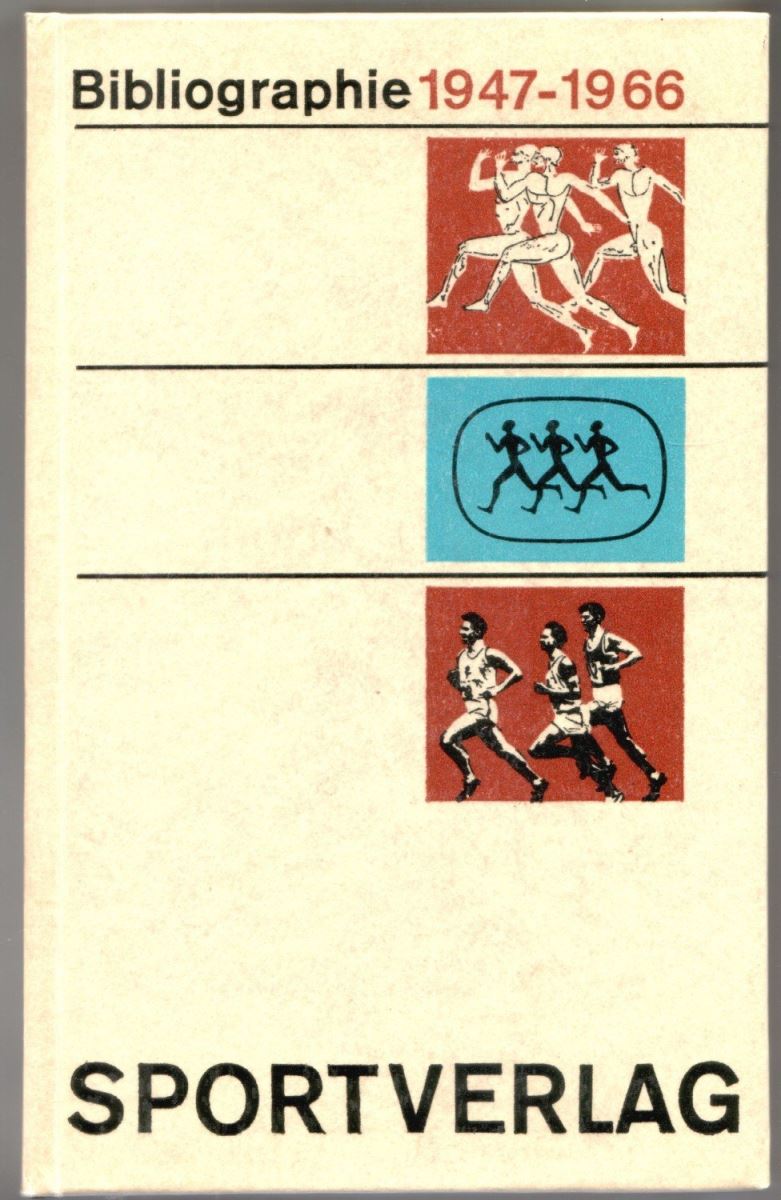 East German citizens learnt Russian in school, enabling them to read Soviet books as well, which in the past was very helpful when Yours Truly needed translations from Russian. However, the Sportverlag Berlin kept a steady flow of Russian books translated into German, while also allowing original manuscripts by the GDR citizens to be published.
East German citizens learnt Russian in school, enabling them to read Soviet books as well, which in the past was very helpful when Yours Truly needed translations from Russian. However, the Sportverlag Berlin kept a steady flow of Russian books translated into German, while also allowing original manuscripts by the GDR citizens to be published.
Working together with Rainer Staudte in the past, his list of German endgame study composers includes too many names, but he provided valuable suggestions for this article, confirming my selection of chess-study composers to present here as well as giving information about other retired composers that we might look at in a future article. Thank you, Rainer! Unfortunately, there are very few biographic details available on most people, so for now only one real endgame study composer and two other personalities — a player and an influential problem composer and editor — were selected to contrast and show a broader spectrum. Finally, a short history of GDR problem chess is attached.
Set before the background given only briefly above, and on which readers are encouraged to read on their own if interested, a man who was born in Oederan whose star would shine bright on the heavens of chess composition spent his life in the GDR. Rolf Richter (26 May 1941 - 14 January 1988) died less than two years prior to modern Germany’s reunification, as it is called (per law the dissolution of the GDR, including its territory and citizens into the FRG as full German citizens). He, however, regularly united something else that was considered difficult: to include all pawn promotions in an endgame study.
Richter first was a player of Fortschritt Oederan (many East German — not only chess-related — clubs have names that hint at progress and motion, and fortschritt literally means “progress” or “advancement”). Other famous clubs include Dynamo Dresden and Lokomotive Leipzig, both strong soccer clubs. Their names mean the same in English as in German, although “locomotive” often is referred to as “engine” as well, as in Thomas the Tank Engine. As chess players, you know what other use the word “engine” has.
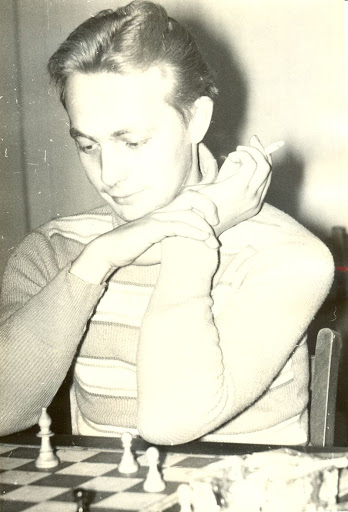 I am a great fan of Rolf Richter’s [pictured] Allumwandlung (AUW, all-promotion) endgame studies and, although he also created other works, I selected two of this kind for the replayable list below. His German Wikipedia page (the permalink should ensure that you can see it even if newer versions of the displayed study appear) shows another consecutive all-promotion for Black. Richter’s studies appeared between 1961 and 1995, often in the German magazine Schach (the “Problems and Studies” section in it was run for many years by Manfred Zucker, see below), totaling 70 to 80 different works.
I am a great fan of Rolf Richter’s [pictured] Allumwandlung (AUW, all-promotion) endgame studies and, although he also created other works, I selected two of this kind for the replayable list below. His German Wikipedia page (the permalink should ensure that you can see it even if newer versions of the displayed study appear) shows another consecutive all-promotion for Black. Richter’s studies appeared between 1961 and 1995, often in the German magazine Schach (the “Problems and Studies” section in it was run for many years by Manfred Zucker, see below), totaling 70 to 80 different works.
Peter Hesse (29 September 1944 - 29 December 2004) mainly was a practical player, and it was Rainer Staudte who told me about him. Hesse has a short biography on German Wikipedia listing his practical successes. Sadly, in his final year, I cooked two of his five endgame studies when analyzing most that had appeared in Schach — they had won the tourney of the East German Chess Federation Deutscher Schachverband in der DDR. The instructive play in one of his three remaining studies can be replayed below.
According to the Wikipedia page, his practical career included two participations in Student World Championships with the GDR national team (Sweden 1966 and Austria 1968). He participated at the Teleschach Olympiad, a correspondence chess olympiad in 1978, playing against Ireland. The games were played per telex, which was a network of teleprinters to send analog messages prior to telefax machines overtaking that purpose. The younger generation might think of it as a physical equivalent to e-mails.
Hesse played for BSG Motor Südost Magdeburg, then for Lok Leipzig-Mitte. In the 1990s he switched to Rochade Magdeburg before returning to Lok in 2004. Hesse played several tourneys in Wernigerode from 1986 to 2002. In his final tourney, the 11th Wernigeröder Schachtage, he won with 6½ out of 7 points, giving testament to his strong practical power until the end, although the official peak was reached in January 1980 with an Elo of 2440. He held the player title of FIDE Master.
Manfred Zucker (15 April 1938 - 23 October 2013) also composed very few endgame studies, ten in total, but was very active in other fields, as well as editor of the Probleme und Studien column in the German magazine Schach. Since 1981 he also edited the column in his hometown Chemnitz’s (then Karl-Marx-Stadt) newspaper Freie Presse. Until his death, Zucker edited the moremovers (mate in 4 or more moves) in Problem-Forum, Wolfgang A. Bruder’s magazine.
It would be impossible to list everything that Zucker did for chess composition in the German Democratic Republic, and Germany in general, so just like Frank Richter in Die Schwalbe, December 2013 (PDF link), I will only mention that Zucker taught Udo Degener (now GM for composing), Mirko Degenkolbe, Torsten Linß, Frank Reinhold, Frank Richter, Michael Schreckenbach, Sven Trommler, and many others. This was while he wrote numerous articles, judged composing tourneys, and also had a day job. Personally I met Zucker once.
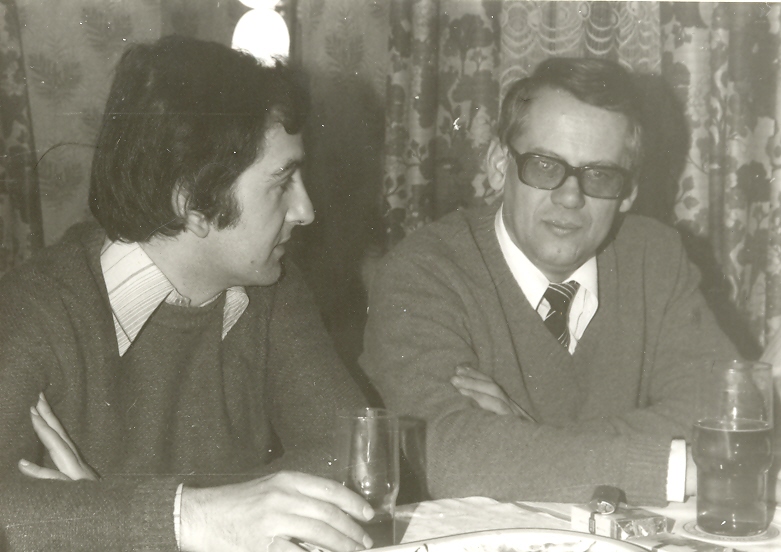
Heinz Schwind and Manfred Zucker
In April 1973 in Schach, Hans Vetter, editor of the Probleme und Studien section since 1965, wrote that, after Günter Schiller already had assisted him in the past months, he was unable to continue the column due to a long illness, so Manfred Zucker was chosen as successor since he recently (in 1972) had become International Judge for Chess Compositions (later Zucker also became FM for composing) and was well-known in the German Democratic Republic problem-chess scente at the time. Manfred Zucker in 2000 retired from his occupation and so also retired from the column on his own wish. Udo Degener took over, but that succesion and how Franz Pachl became his successor and current editor is a story for another day. The same magazine in December 2013, however, had an obituary by Michael Schreckenbach (thanks to Mirko Degenkolbe for helping me locate it — I had read it at the time, but didn’t remember where) from which we take more information:
Zucker early became member of a chess club, now called TSV IFA Chemnitz, to which he was loyal until the end. Zucker’s first composition, a selfmate, was first printed in Schach in February 1956. We reproduce it below. Looking back at the work of himself at 17 years old, Zucker wrote that he might be one of the few composers who are fully satisfied with their first problem. 127 of his compositions were created together with other authors, and according to Mirko Degenkolbe who looked through his archive, Zucker composed a total of 1248 works, including nine endgame studies (and one correction). As Schreckenbach wrote, Zucker always strove to find the final form of a problem.
After the fall of the German Democratic Republic in 1989, Zucker traveled around the world. As he sent postcards to Schreckenbach, it could be deduced that he traveled abroad 43 times, for the last time in 2011 to Russia where he visited St. Petersburg and Moscow, including a trip on Lake Ladoga.
Necessitating some medical operations in his last years, Zucker kept his friends informed about his health, being in relatively good condition before an intestinal operation unexpectedly resulted in his death.
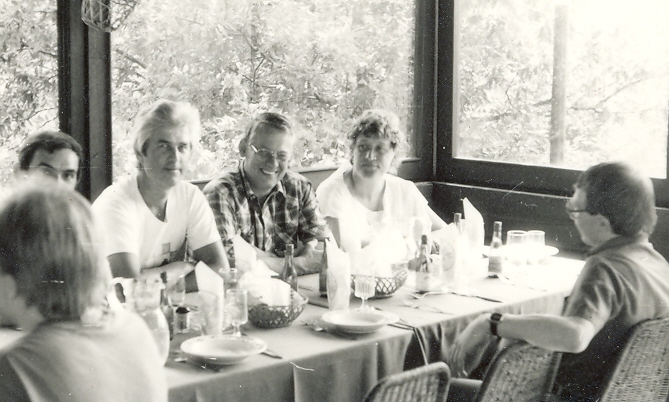
Schwind, Zucker and Mueller
The relevant history of chess composition on the territory that later became the German Democratic Republic dates back to the 19th century. As retold by Manfred Zucker in the Problemschach book (see the end of the article), it focused mainly on the working class.
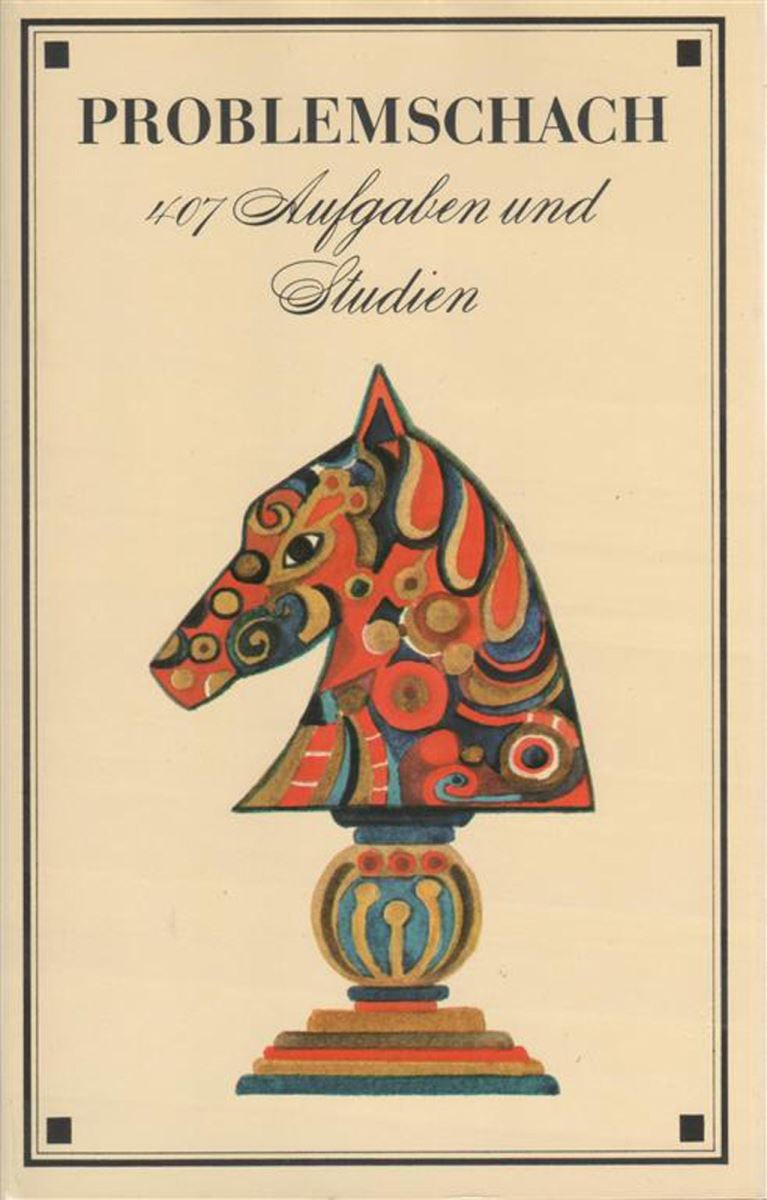 Karl August Mörtzsch (31 October 1831 - 14 October 1907) was the first working class chess composer on the later GDR territory. A cigar manufacturer by profession at a time when 12 hours and more working days weren’t uncommon, he composed 49 chess problems, some of which incorporate themes of the later founded Neudeutsche Schule (“New German School”) which focuses on logical ideas.
Karl August Mörtzsch (31 October 1831 - 14 October 1907) was the first working class chess composer on the later GDR territory. A cigar manufacturer by profession at a time when 12 hours and more working days weren’t uncommon, he composed 49 chess problems, some of which incorporate themes of the later founded Neudeutsche Schule (“New German School”) which focuses on logical ideas.
Problem chess gained a broad appeal in the working class after the First World War. Arthur Klinke (1 March 1887 - 23 July 1942) founded the Deutsche Arbeiter-Schachzeitung (roughly “German Worker’s Chess Newspaper”), with the problems edited by Karl Kaiser. Another source, the Gerhard Willeke book Geschichte des deutschen Arbeiterschach (Kuhn/Murkisch, 2001) shows that Kaiser also wrote extensive articles. Klinke also was president of the problem commission in the Arbeiter-Schachbund (Worker’s Chess Federation).
The Büchner brothers Richard (5 February 1908 - 2 January 1929) and Rudolf (2 April 1900 - 2 May 1942) both only composed for a few years — notable is Richard’s early death. A heart defect caused his early demise (source: Willeke’s book).
One of the leading officials (for practical play) other than Arthur Klinke was Willy Roscher (17 December 1900 - 23 December 1953) who often was asked to judge composing tourneys, and also was an excellent composer himself.
In the times before the Second World War, there was a trio of chess composers who worked on the territory of the later German Democratic Republic: Hans Vetter, Dr. Rudolf Leopold and Dr. Gerhard Kaiser. Their work led to international recognition of German chess problems. Vetter was a theoretician of the Neudeutsche Schule (New German School), combining them with Bohemian Checkmates (i.e. at least three with all white pieces involved). Other composers who were influenced by Vetter to also compose moremovers (mates in 4 or more moves) called themselves his pupils, for example Lepuschütz.
Leopold was a theoretician and composer of the “Dresden idea”, coined by Palitzsch in 1918. The beautiful problem with that theme that is in Zucker’s essay is reproduced below as well.
Kaiser, not only as a composer and theoretician but also as a collector of chess problems, also contibuted to the development of the Neudeutsche Schule. He specialized in logical combinations in miniatures, i.e. chess problems with up to seven pieces.
Their life data is as follows: Hans Vetter (27 June 1894 - 13 April 1973), Rudolf Leopold (29 December 1894 - 1 November 1986), Gerhard Kaiser (11 October 1890 - 13 June 1966).
The term Fata Morgana, as Yours Truly learnt many years ago, stems from the “Fairy Morgan” from the King Arthur legend. In chess problems, the term describes a theme in the selfmate genre (i.e. White forces Black to checkmate him) where Black to move would be forced to checkmate immediately, but White to move has no waiting move. This type of idea was the favourite — although narrow — field of chess composition of Wolfgang Weber (18 March 1909 - 1 July 1981). A subtype where the mating piece is captured in the actual solution is called the “Weber type”. When Eduard Birgfeld wrote about the Fata Morgana in 1922, Weber was strongly influenced by his article, and started composing such problems, eventually becoming an internationally renowned selfmate expert.
Prior to the Second World War, those chess composers earned their good reputation, and the surviving ones were, together with the working class chess players, the ones who after the war took care of chess composition being organized again. The German Democratic Republic chess problems and studies commission held, often together with FIDE and newspapers, many tourneys for political, cultural and chess people and events. One of these, organized by Sächsische Zeitung in the memory of Hans Vetter in 1974/1975, attracted 253 participants.
A look at the post-war development shall be provided in a future article.
Sources used in this article and recommended further reading (in German)
Problemschach 407, Aufgaben und Studien. Main editor: Dr. Karl-Heinz Siehndel; edited by Fritz Hoffmann, Günter Schiller, Dr. Karl-Heinz Siehndel, Manfred Zucker. Sportverlag Berlin, 1 November 1986 (3rd not amended edition). ISBN 3-328-00205-7
On the history of German chess problems in the working class (in German): Gerhard Willeke: Geschichte des deutschen Arbeiterschach, Kuhn/Murkisch 2001. Arndt Willeke makes the book available as PDF file on his website (19 MB).
Click or tap an entry in the list to switch positions
You probably know that you can move pieces on our replay boards to analyse and even start an engine to help you. You can maximize the replayer, auto-play, flip the board and even change the piece style in the bar below the board.
At the bottom of the notation window on the right there are buttons for editing (delete, promote, cut lines, unannotate, undo, redo) save, play out the position against Fritz and even embed the ChessBase game viewer on your website or blog. Hovering the mouse over any button will show you its function.

World Federation for Chess Composition (www.wfcc.ch)